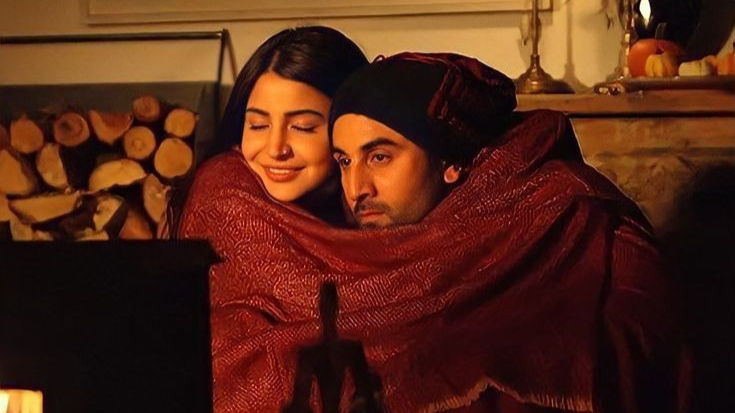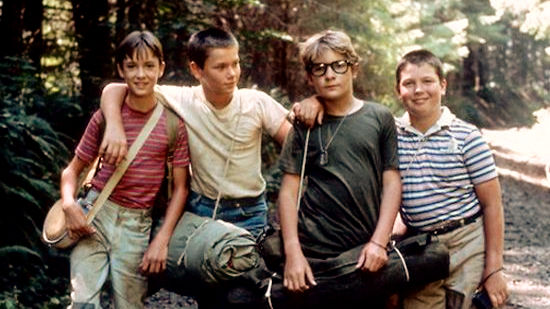Finding Yourself in the Mess of Growing Up: Codes & Conventions
- arijarslaan
- Nov 29, 2024
- 6 min read
Updated: Feb 24
This post was written by Anmol, who graciously joined us on a Zoom call — not only to help, but also to multitask by cleaning her room. She is too cool to check her messages because she’s currently too busy with her math exam to check in properly, but somehow she still manages to keep everything together.
When we think of coming-of-age stories, several things come to mind. Maybe it’s our favorite teen movie, a novel we read growing up that stuck with us, or a replay of our most embarrassing moments (in this case, Phupho Productions can easily secure an olympics gold). This genre is all about what happens along the journey (read: rollercoaster ride) from childhood to adulthood — those awkward, quirky moments of self-discovery, growth, and finding your place in the world, much like how we had to find pace to navigate through our preliminaries. Whether it’s on screen, in books, or even in music, these stories have something for everyone. So, let’s dive into the codes and conventions of this genre, and see what makes it such a relatable and powerful way to tell a story.

KEY THEMES
At the heart of every coming-of-age story is the theme of identity. The protagonist is usually on a quest to figure out who they are, what they stand for, and how they fit into the revolving world around them. Along the way, they’ll probably lose their innocence. That’s when they start realizing the world isn’t as perfect as it seemed when they were younger. Life is complicated, and heartbreak, disappointment, and tough decisions are our constant companions. But it’s also about self-discovery. These characters are learning about themselves, their strengths, and their flaws, and this is what makes us relate to them even more.
There’s also a constant tug-of-war between rebellion and conformity. The protagonist might feel the pull to break free from the shackles of the rules and expectations of their family, school, or society, but they soon realize that balance is key. And, of course, friendships and relationships are HUGE. Finding your chosen family never comes easily, and the obstacles are endless. As the protagonist matures, their friendships change, and they might even have their first serious crush, which always makes things more interesting, to say the least. The family dynamic also plays a huge role — whether it’s feeling misunderstood by parents or coming to terms with your family’s expectations, these relationships often shape the character’s journey.

CLASSIC CHARACTERS
The Protagonist (The Hero)(phupho group?):
This is the character you will most probably be rooting for (us). They’re typically a teenager or young adult, figuring out who they are and what their place is in the world. They're often messy, emotional, and so relatable.
The Mentor (Sir Zia):
Every hero needs guidance. This is the older, wiser figure that the protagonist looks up to — a teacher, older sibling, or even a stranger who helps the protagonist make sense of their world. They offer advice, but sometimes have their own lessons to learn, too.
The Antagonist (Alevels):
Not always a villain, but often an internal conflict like self-doubt, fear of failure, or a tough decision the protagonist has to make. Sometimes it’s external, like a bully or societal pressures, but it always challenges the hero in some way.
The Sidekick(s):
The loyal best friend (or friends, plural) or sidekick who makes the journey a little less lonely (and way more chaotic). They might not always agree with the protagonist, but they’re there when it counts.
The Love Interest (obviously, media, OBVIOUSLY):
First love! Or maybe it’s unrequited love. Either way, romantic (not so much) relationships push the protagonist to grow, sometimes by breaking their heart, and other times by teaching them the power of connection.

PLOT STRUCTURE
A typical coming-of-age story often starts in a safe, innocent world. The protagonist is usually still in their bubble — living at home, hanging out with friends, without any care in the world. But then, boom! Something happens — an inciting incident that shakes things up. It could be a move to a new town, the death of a loved one, or even just a realization that things are changing. This moment kicks off the movie, and the journey begins.
Next, the protagonist faces a series of struggles that force them to grow up. They might be dealing with school pressures, family drama, or just trying to figure out who they want to be. But that’s not all — there are always moments of laughter, awkwardness, and emotional highs. The climax is the turning point where the protagonist confronts their biggest challenge — which can be anything, whether it’s standing up for themselves, making a tough decision, or finally understanding their place in the world.
The story wraps up with the resolution, where the protagonist has always learned something important, changing the course of their life. They’re not fully “there” yet, but they’ve come a long way and are ready to face the next chapter with a little more confidence and a little less fear.

SETTINGS
A lot of coming-of-age stories take place in small towns or suburbs. The reason for this might be so that the transition from the simplicity of childhood to the complexities of adulthood feel more intense. These settings create a world that feels familiar and comfortable — until it’s flipped upside down. School is another major setting — it’s where the protagonist deals with friendships, enemies, crushes, and social drama. A nature setting — like a summer camp, beach, or forest — might symbolize freedom, change, or self-discovery, mostly a road-trip story. And in more modern or urban stories, the city often represents a place where the protagonist can escape their old life and leave their old selves behind, to enter a world with more opportunities and challenges for them.

VISUAL CODES (IN FILM/TV)
If we pay close attention to the color palettes in any coming-of-age movie, we can quite easily figure out what each tone symbolises. Warm, soft colors often reflect innocence or nostalgia, while darker tones might indicate the protagonist’s internal/external struggles, the moment they grow up (or are forced to), etc. Directors often use close-up shots to show the protagonist’s emotional moments, and of course, symbolic elements are also included. And then there’s the soundtrack, which can range from being a nostalgic song from their childhood to an anthem that signals a new beginning.

TONE AND STYLE
The tone of a coming-of-age story can lean towards being fun, awkward, and emotional all at once. It’s full of those cringey and cheesy moments where you remember what it felt like to be a teenager, so unsure of yourself and constantly second-guessing every decision you made, which is something we all can relate to (side-eyes 20 pending assignments). But it’s also full of triumphs — those moments where you finally get it, and everything seems a little clearer. We are left feeling bittersweet, because growing up means losing that innocence and dreams of a simpler, more carefree world.

NARRATIVE TECHNIQUES
Coming-of-age stories often use first-person narration, so we get the protagonist’s internal monologue which helps us connect with and relate to their inner turmoil. Flashbacks are another popular technique to show us how far the protagonist has come since their childhood, and voiceovers often provide insight into key moments where the character reflects on their growth. These techniques help us see the protagonist’s personal growth, and make us feel like we are on this journey with them.

CONCLUSION
The beauty of coming-of-age stories is that they’re so universal. We’ve all been through that awkward transition from childhood to adulthood, those relatable moments when we realize that growing up isn’t all it’s cracked up to be, but a necessity. Whether it’s navigating school, love, or friendships, these stories are there to remind us that growth isn’t always easy, but it’s definitely worth it. And at the end of the day, no matter how messy or chaotic it gets, we’re all just trying to figure out who we are and where we fit in. This genre resonates with us deeply, mostly because it’s all we are either currently going through, or have passed by, and that is what makes the exploration of it more fun and relatable.




Comments